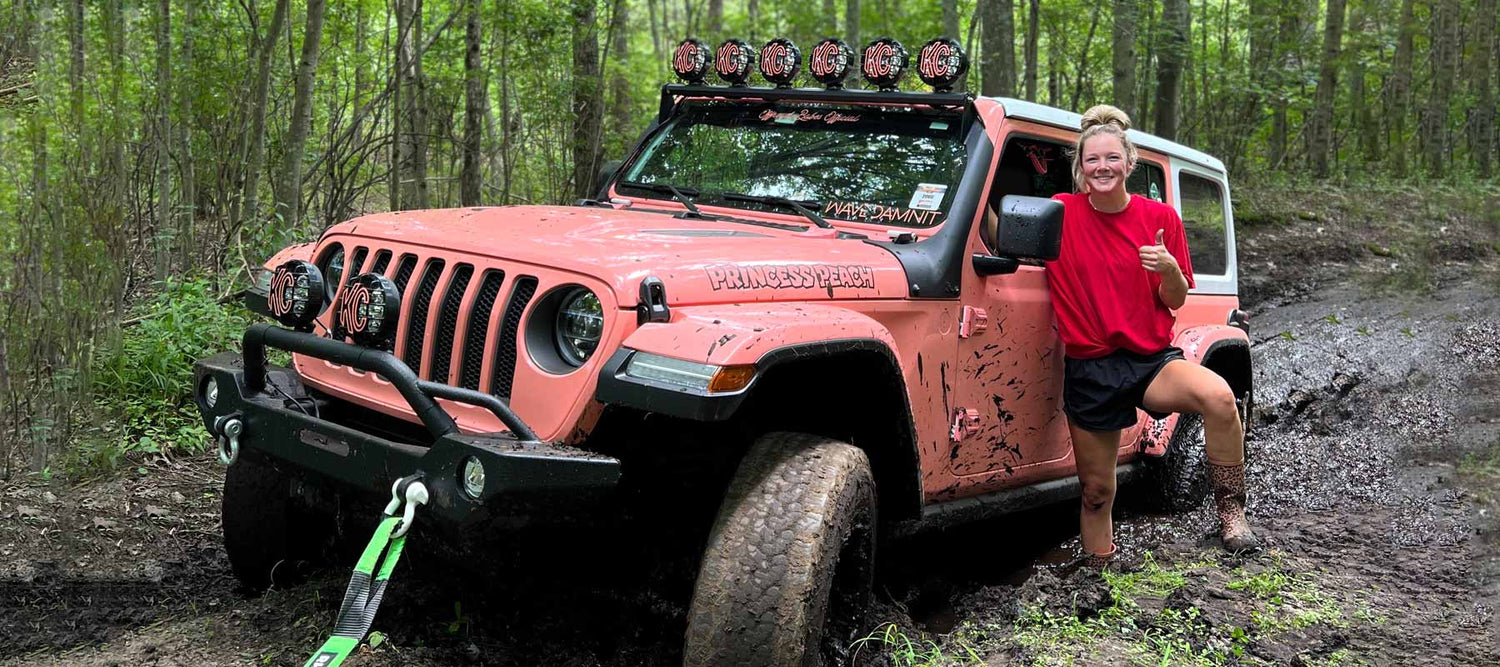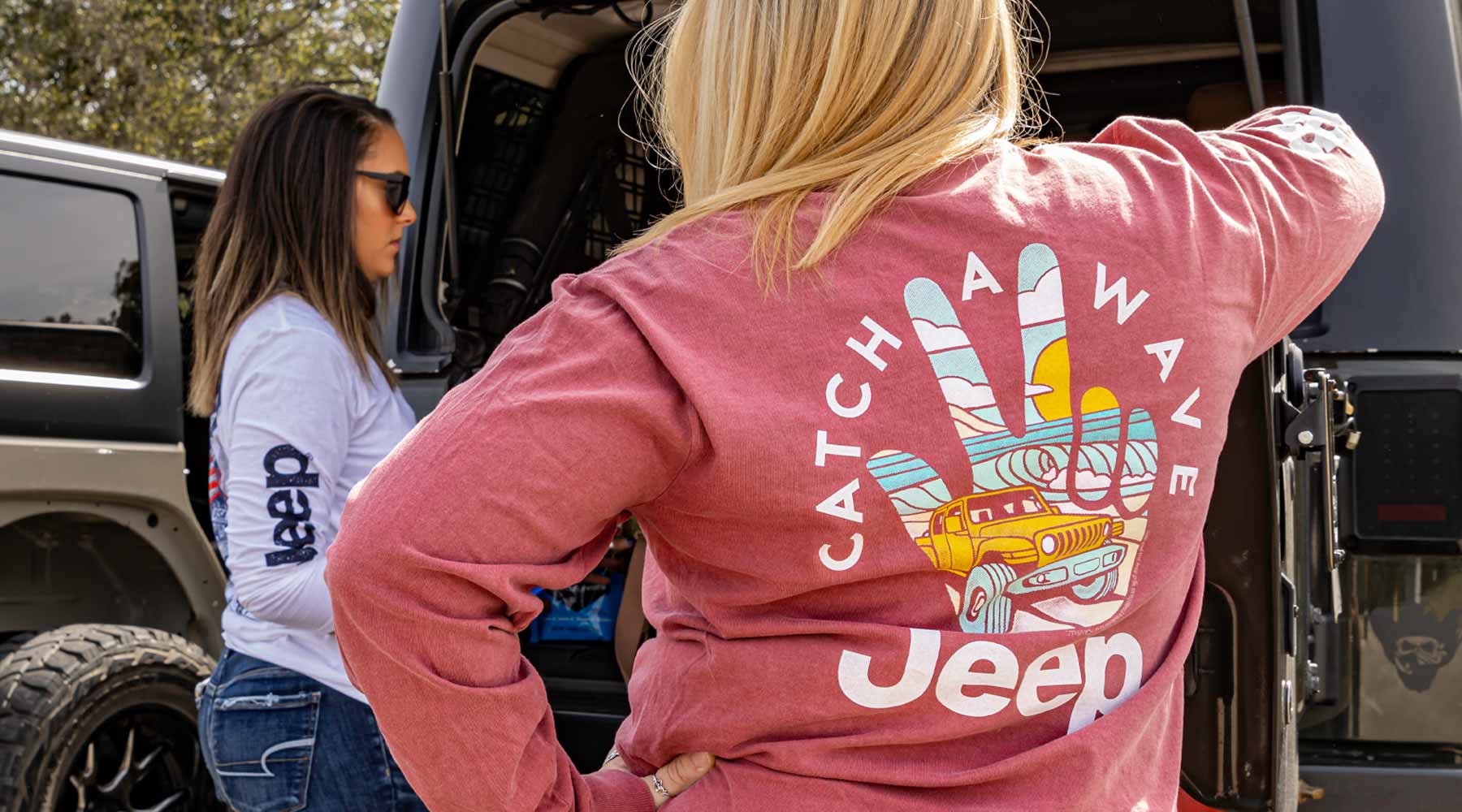![]()
When off-roading in your Jeep, there's nothing better than feeling confident behind the wheel, especially while navigating through treacherous ground as you take in breathtaking natural landscapes.
As much fun as this popular outdoor activity is, it's worth knowing about some of the challenges you may face, especially if you're preparing for your first Jeep off-roading adventure. To make the most of off-roading, embrace your Jeep's strengths while looking out for any unexpected obstacles. Here are some of the most common Jeep off-roading challenges and how you can prepare to take them on.
Your Jeep Might Suffer From Misalignment
Your Jeep's suspension system absorbs the stress of bumps and impacts to keep your tires on the ground. It quickly shifts the distribution of the vehicle's weight to prevent rollover and ensures you can maintain control. Driving over rugged terrain, dirt roads, holes, and debris destabilizes your suspension. Over time, the system can become overstressed.
As the suspension components weaken and shift out of place, your Jeep may start to suffer from misalignment. Misalignment results in difficulty with control, pulling to one side or the other, and noisy steering. You can avoid misalignment by adjusting your tire pressure to the manufacturer's recommended PSI setting and taking your vehicle for regular realignment maintenance. If you continue traversing holes and ditches with a misaligned vehicle, expect a less controlled drive.
You Might Encounter Transmission Problems While Off-Roading
A stable off-road ride requires smooth acceleration and lightning-fast gear-shifting, which can be tricky when driving a manual transmission. Your Jeep's transmission takes a beating thanks to the constant changes in acceleration, especially if you tend to keep your clutch engaged when coasting or push hard on your accelerator when going uphill.
If you notice a sweet, smoky smell, fluid leaks, jerky shifting, or a sudden loss in horsepower, it's time to get your transmission checked out. Left unchecked, it can lead to costly damage.
Damage To The Undercarriage

The undercarriage refers to the parts underneath your Jeep, such as the drive shaft, oil pan, catalytic converter, and steering damper. While the most sensitive areas have metal skid plates to protect them from damage, others are exposed to the elements. In particular, potholes, debris, and sharp rocks can damage the undercarriage and destabilize the vehicle.
Damage to the undercarriage should be addressed immediately, especially if you want to prevent your Jeep’s inner components from being damaged. Prepare for a better off-road experience by seeking out undercarriage damage as soon as it happens. Look for strange sounds, leaks, or instability while driving. For Jeepers who prefer coastal off-road trails, be aware that salt water can corrode parts. As soon as you're done riding, spray down your Jeep's undercarriage to keep rust at bay.
Getting Stuck

Thick mud, water, and sand are all part of the fun of Jeep off-roading, but they also pose the most significant risk of getting stuck. Fortunately, you can reduce the chances of getting stalled by using a vehicle equipped with 4WD. With all four tires moving simultaneously, your Jeep can power you through almost any jam.
To avoid getting caught in the mud, use your momentum as you head over low-traction areas and lay off the accelerator as soon as the tires start slipping. Once you lose tire traction, trying to accelerate through the obstacle can dig your tires in even deeper. Of course, even a 4X4 isn't immune to a particularly slippery patch of terrain, so prepare by packing a winch, shovel, traction pads, recovery straps, and a pair of gloves.
Reduced Vehicle Power
Notice your engine stalling when climbing up hills? Reduced vehicle power most commonly comes from clogged fuel or air filters and occasionally an overheated engine. There are many reasons that an engine might overheat, including a clogged coolant house, broken water pump, or a failing radiator fan. As you push your Jeep to its limits, watch for signs that heat is trapped in the engine compartment. If you see steam or notice that your engine temperature gauge is in the red, stop, turn off your vehicle, and monitor the temperature gauge until it's back to normal.
To avoid more severe damage, be sure to take your Jeep in for a check-up before heading out for another off-roading trip. Nobody wants a cracked head gasket. Once your Jeep is in fighting shape again, you can install some aftermarket parts that will help you prevent problems in the future. For 50 percent more horsepower, equip your Jeep with a supercharger to get through long drives with more confidence. Then, add a cold air intake kit to regulate the engine's temperature.
Damaged Tires

Off-roading can be a thrill, but your tires will suffer wear and tear. Sharp stones, sticks, jagged rocks, and logs can penetrate your tire treads and result in inconvenient flat tires. Off-road flats are especially dangerous because the ground is uneven and unpaved.
Driving even momentarily with tire damage creates the potential for serious life-threatening accidents. Prepare for tire damage by choosing specialty off-road tires. They are best for traction and durability, with deeper tread patterns and thicker sidewalls to prevent punctures.
Conclusion
For Jeep enthusiasts, driving off-road provides the thrill of a lifetime. From crossing creeks to skidding over sand, there's an incredible range of obstacles to get your heart racing and adrenaline pumping. But your adventure can be dampened by off-road driving challenges, which may include tire damage, reduced engine performance, getting stuck, transmission problems, or vehicle misalignment.
Don’t let the off-road party end on a low note. Whether you're headed for a primitive camping trip or racing a friend on the sand dunes, preparation is a must if you want to prevent cutting your adventure short. For even more info on essential Jeep off-road maintenance, click here.
Frequently Asked Questions
Want to know more about Jeep off-roading? Here are some common questions Jeep owners ask.
What Is The Hardest Jeep Trail?
The most challenging Jeep trail is The Rubicon Trail, located near South Lake Tahoe, California. At 22 miles long, this difficult trail runs from east to west, starting with an uphill climb as you prepare to navigate a series of steep inclines running from the Wentworth Spirits entrance to Walker Hill and the Soup Bowl.
The trail consists of multiple sections and off-road challenges designed to test the power and durability of your Jeep. You'll need to maneuver around boulders, take on sudden tough terrain changes, and stay steady along rock ledges. The trail requires precision driving and serious skill. It’s a real thrill for all advanced drivers who want to test their off-road capabilities.
Where Are The Best Jeep Off-roading Trails?
The best off-road trails put your vehicle's maneuvering and power to the test. When choosing a trail, you should look for something that will challenge your abilities but isn't more than you can handle.
Mojave Trail, the 150-mile east and west route in Los Angeles, California, takes three days to traverse. You'll rarely see water, but you'll fight for traction as you pass breathtaking views of mountains and canyons.
For another demanding drive, try Utah’s backcountry Moab Jeep Trails, where you'll encounter one of the most gnarly rocky trails, Hell's Revenge, a 14-mile stretch lasting 3-4 hours. Here, you'll explore a trail with a healthy share of steep dunes, hard corners, rock ledges, and hills in the distance. Newer drivers looking for a more manageable challenge can head to the nearby Onion Creek and Fisher Towers, 20-miles of relaxing trails that are only slippery when wet.
What Equipment Do You Need For Off-Roading?
For a safe and enjoyable ride, you'll want to be well-prepared with tools and equipment to help you get out of a sticky situation and back on the road as soon as possible. Bring a traction recovery kit consisting of a tow strap, shovel, traction pads, and flashlight. You'll also want a tire repair kit and a spare in case of a puncture. If you're off-roading with low tire pressure, bring a portable air compressor so you can make adjustments according to the terrain.
You'll also want an off-roading tool kit, including wrenches, pliers, sockets, wire cutters, duct tape, and a pocket knife. Many experienced trail explorers keep spare spark plugs and fuses in their vehicles. A jump starter will prove essential, especially on more remote sections of the trail where you may lose cell service. Finally, if your vehicle isn't already equipped with a GPS system, you'll want to install one before you head out. Make sure it's updated with the most current maps so you can find your way back to the trailhead once your trip ends. Take along trail maps, too.
What Does A Trail-Rated Jeep Mean?
The Jeep Trail-Rated badge is a symbol of safety and adventure. It’s given to Jeep models that pass a series of rigorous tests to ensure rugged, off-road capability. Trail-Rated Jeeps are guaranteed to withstand the toughest terrains and harshest weather conditions, making sure that your Jeep really can “Go anywhere. Do Anything.”
The Trail Rating process tests Jeep models on treacherous trails across the US. Wranglers, Trailhawks, and the other Trail-Rated Jeep models undergo a grueling vetting process to ensure they can ford streams, climb boulders, and avoid those unexpected obstacles you might find on the trail. They also test for maneuverability and traction to give you the best driving experience on your road to adventure.
How to Choose The Right Type Of Off-Road Vehicle For You?
For off-road enthusiasts, durability is one of the most important factors when choosing a vehicle. A vehicle with a high durability rating can withstand the harshest elements of the world's most popular off-road trails. If you're planning to maneuver tight corners and hair-raising dune climbs, an excellent suspension system is a must, as are all-terrain tires.
Because of the challenges of off-road driving, prioritizing efficiency and power is essential. Look for improved braking and handling among recent Jeep models and choose vehicles with updated safety features to feel more confident on rugged trails.
What Jeep Models Are Trail Rated?
Jeep Wrangler models, Jeep Gladiator models, and the Cherokee and the Compass are all Trail-Rated Jeep models.
The latest Jeep Wrangler model is equipped for harsh conditions and promises improved maneuverability and more power. Jeep Wranglers are designed for the trail with removable roofs, removable doors, folding windshields, and stronger suspensions. The Rubicon probably earns its Trail-Rated Badge the most, with an upgraded transfer case and four-wheel-drive system, rock rails, locking front and rear differentials, sway bar, and oversized all-terrain tires. The Jeep Wrangler Rubicon 392 features a 6.4-liter HEMI V8 engine to add serious muscle to your mudding.
How Much Ground Clearance Do You Need For Off-Roading?
There is some variability depending on the type of off-roading challenges you prefer, but generally, the higher the ground clearance, the better your Jeep will handle off-roading.
The Jeep Cherokee Mojave has the highest ground clearance, at 11.6-inches, making it an excellent choice for off-roading.
What Is The Purpose Of Trail Rating?
The purpose of Trail Rating is to make sure your Jeep can handle every kind of terrain and challenging driving condition.
When you have a Jeep that has been vetted by the rigorous Trail Rating process, you can be confident that your Jeep is safe and capable, no matter what obstacle or weather event is up ahead.
What State Is The Rubicon Trail In?
The Rubicon Trail is in California and is only one of many options in the Golden State.
Cali is one of the best states for off-road driving, offering Jeepers exciting road obstacles like mud pits, long stretches of desert driving, and dune climbs that will keep you occupied for miles.





